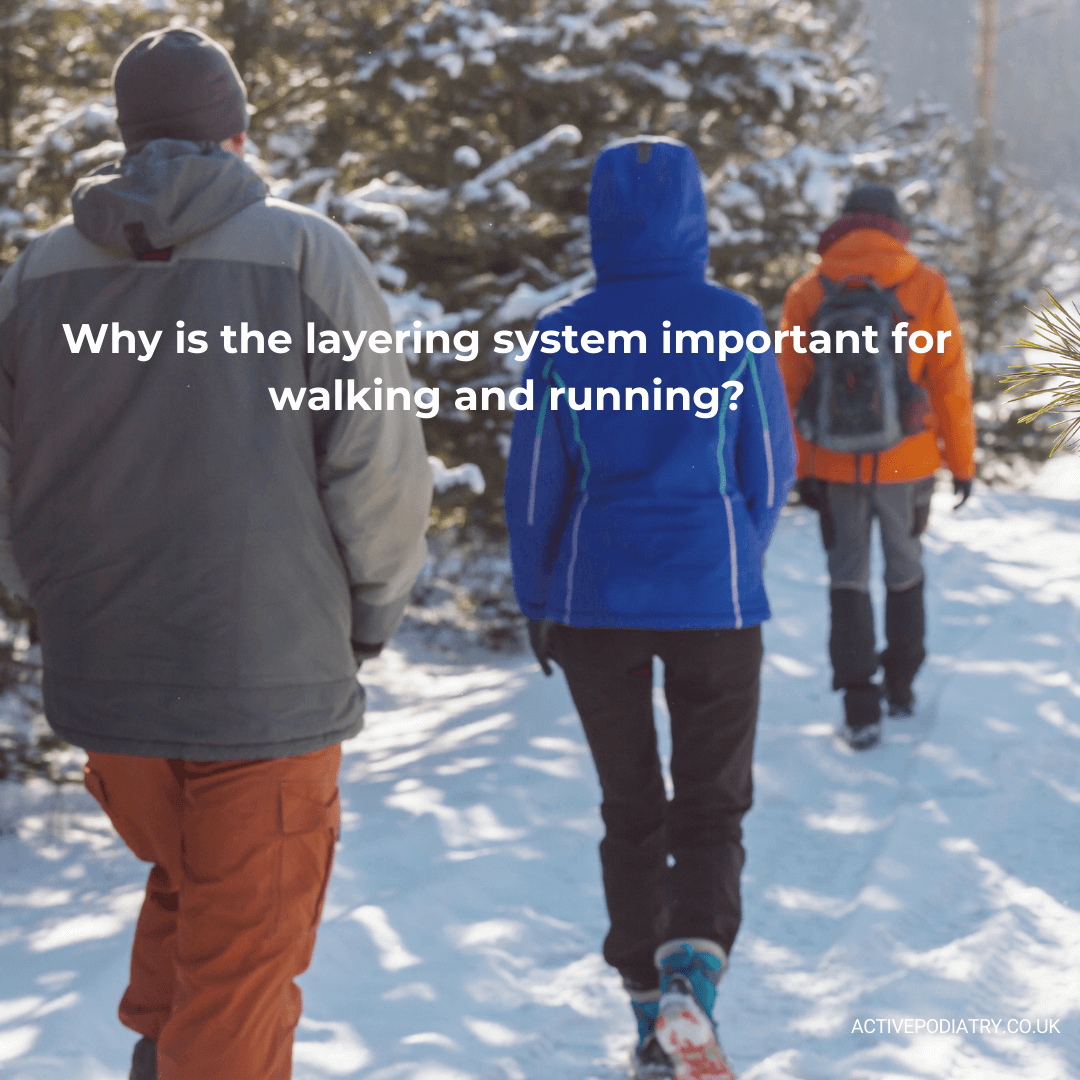Why is the layering system important for walking and running

Why is the layering system important for outdoor walking and running?
Put very simply, the layering system of clothing traps pockets of warm air in between the layers of clothing, regulating body temperature when on the move. You can then easily regulate body temperature with zips, removing and adding layers. Let’s take a deeper dive into the physiology to understand what is going on in the engine room so you can better plan your clothing for your next Winter walk or run.
What happens when we get cold?
During fluctuations in temperature, the body prioritises keeping the body core at a constant temperature, ensuring the vital organs do not get too hot or too cold, a process called thermoregulation. Centres in the brain sense temperature changes by means of sensors in the skin and the body systems then adjust by increasing blood flow to the core while decreasing blood flow to the extremities, i.e, the hands, feet, ears, and nose. And, er, one or two other things.
Cold hands, cold feet
Anyway, this autonomic response leads to the familiar sensation of cold hands and feet, even if wearing thick gloves and socks when we first step outdoors. Warmth comes via the circulation and with decreased circulation comes decreased warmth. As we start moving, however, temperature at the body core increases as muscle activation also generates heat, and this causes the body systems to thermoregulate downwards, diverting blood flow away from the core back to the skin and extremities wear it can be released into the atmosphere by means convection, similar to a radiator. This leads to the somewhat bizarre experience of feeling boiling hot on a freezing cold day, necessitating removal of layers, which is fine until you stop, when you need to put them all back on again! Dressing in layers rather than just a big thick coat makes it much easier to make fine adjustments on the go releasing trapped pockets of warm air as needed to keep you feeling comfortable.
Dress for the second mile.
Understanding how these systems work helps us to plan our clothing at the start of a walk or run. A common mistake is too much on at the start, trapping too much warm air and causing rapid heating of the core, leading to us feeling hot and stuffy as the body warms up. Dress for the second mile! Another mistake is not to prepare for stops, keeping warmer clothing in an inaccessible part of your backpack so that when you need it, rapid cooling happens before you can get those layers back on. Cold fingers make it worse so make sure you are prepared!
Dehydration? In Winter??
An interesting factor that is often not planned for when walking or running in cold weather is dehydration. A common misconception is that this only happens in warm weather due to sweating, but this is not the case. Breathing in cold dry air increases fluid loss as your body needs to warm and moisten the air before it reaches your lungs. This type of dehydration is much more subtle and insidious but can lead to fatigue and loss of performance if ignored, just the same as in hot weather. So make sure you are taking regular sips of water, even if you don’t feel thirsty.
Summary
So, to summarise, having a system of layers, for example a long sleeve base layer, fleece and windproof/waterproof plus an additional layer in your backpack is a good basis to start off with, depending of course on the activity you are planning. The same system works with your hands and feet, wearing mittens over gloves and packing extra socks. Finally, don’t forget to keep hydrated with water and the classic thermos of tea/coffee as per your taste. If you need to stop for a pee a couple of times along the way, you have probably got it about right!
All of this helps to optimise metabolic efficiency on your outdoor forays, reducing fatigue and making your trips more comfortable and enjoyable.